1

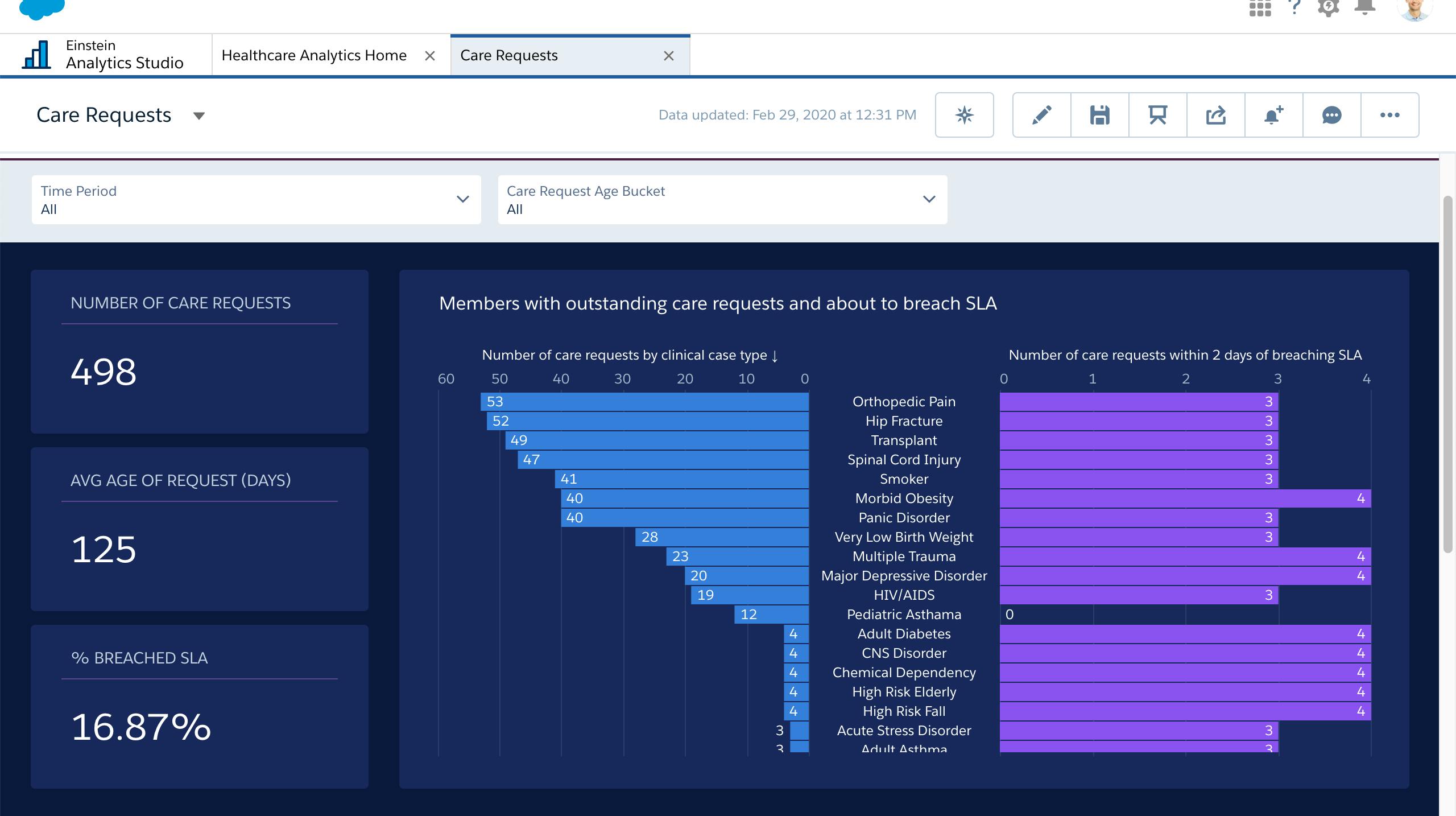
Analytics
With this complete set of collected information, agencies can quickly analyse key performance areas of their readiness, share the analysis and act upon the analysed data.

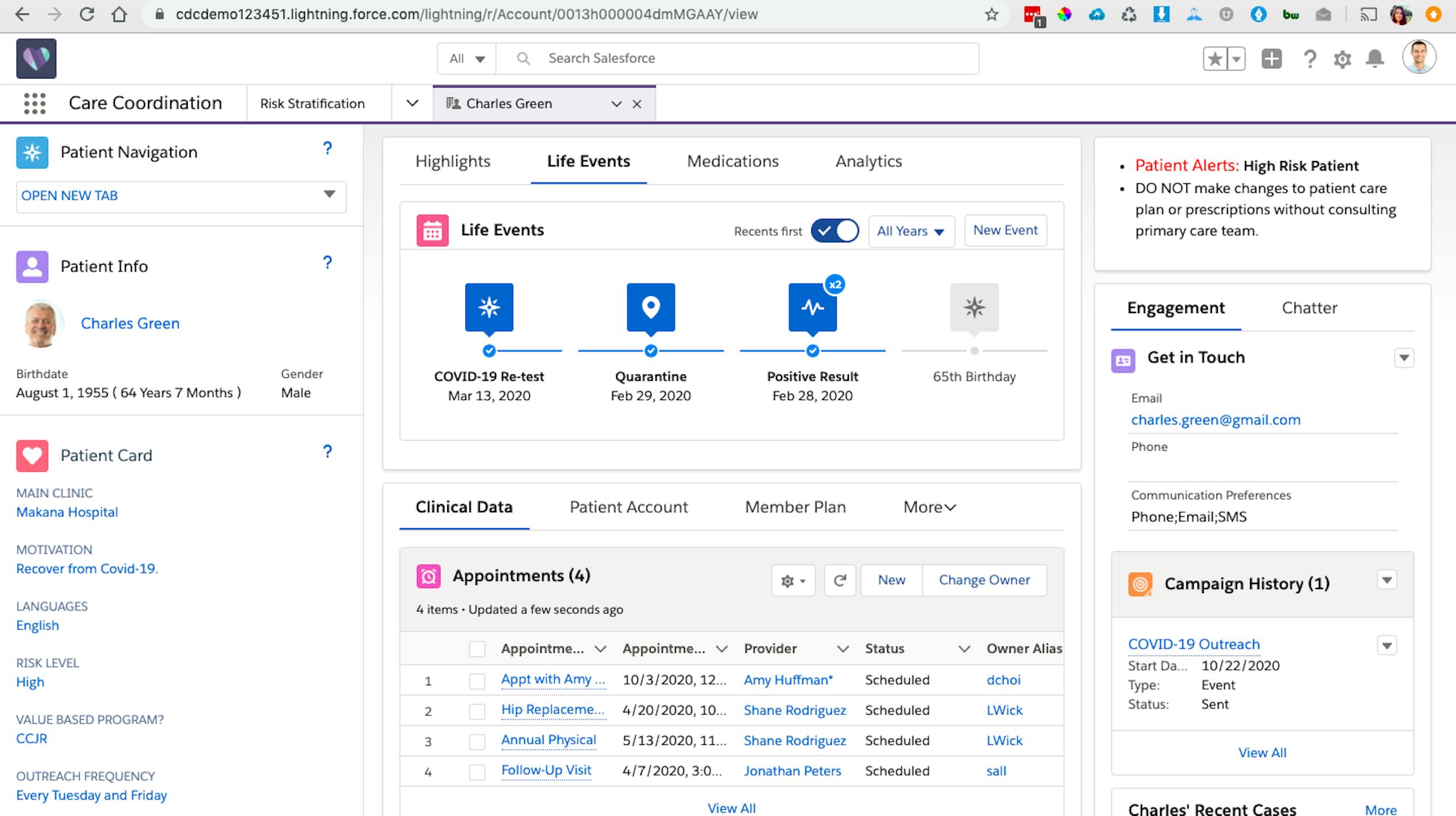
Overview
In any serious emergency, governments will have a wide-range of individuals and sick or injured patients to monitor both at the site of the crisis and remotely. Care and oversight is often delivered by a broad coalition of medical professionals. To bring consistency and quality to initial and long-term response and care it is important for responding organisations to have a consistent care plan, health and wellness protocols, and tracking mechanism for all patient interactions.
Salesforce Health Cloud offers governments the ability to manage patient care and interaction including:
- Health Timeline
- Patient Profile
- Care Team Coordination
- New Patient Onboarding
- Intelligent Task Management
- Care Plan Customisation
- Advance Patient Segmentation
- Risk Stratification

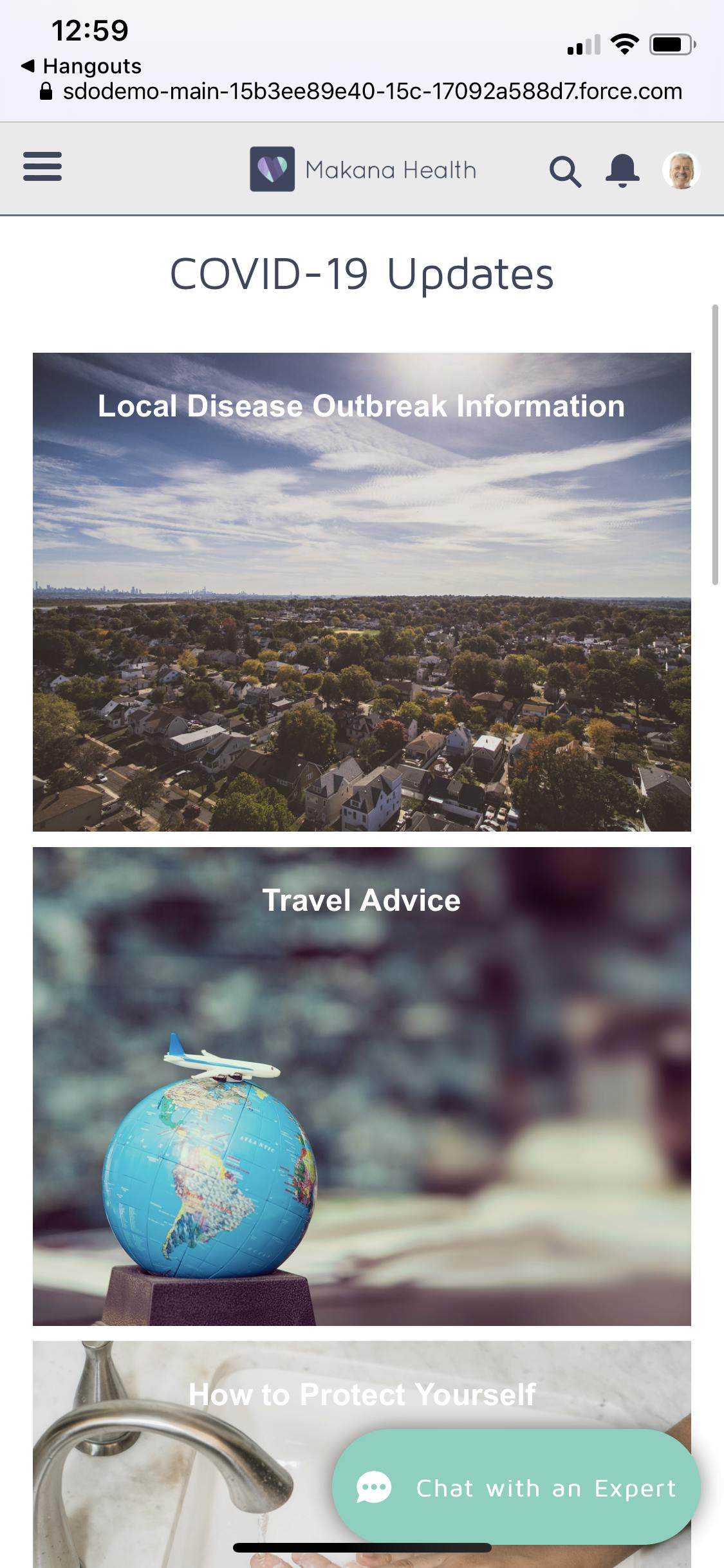
Proactive Response Management
Proactively send citizens and patients information on how to get help in an emergency. Sending patients to a self-service community helps reduce calls and case loads requesting basic information. Citizens can login to Salesforce Community portal to see important links, blog posts, videos, knowledge articles and more. These sites are all mobile responsive so citizens can easily access via a mobile or tablet browser.

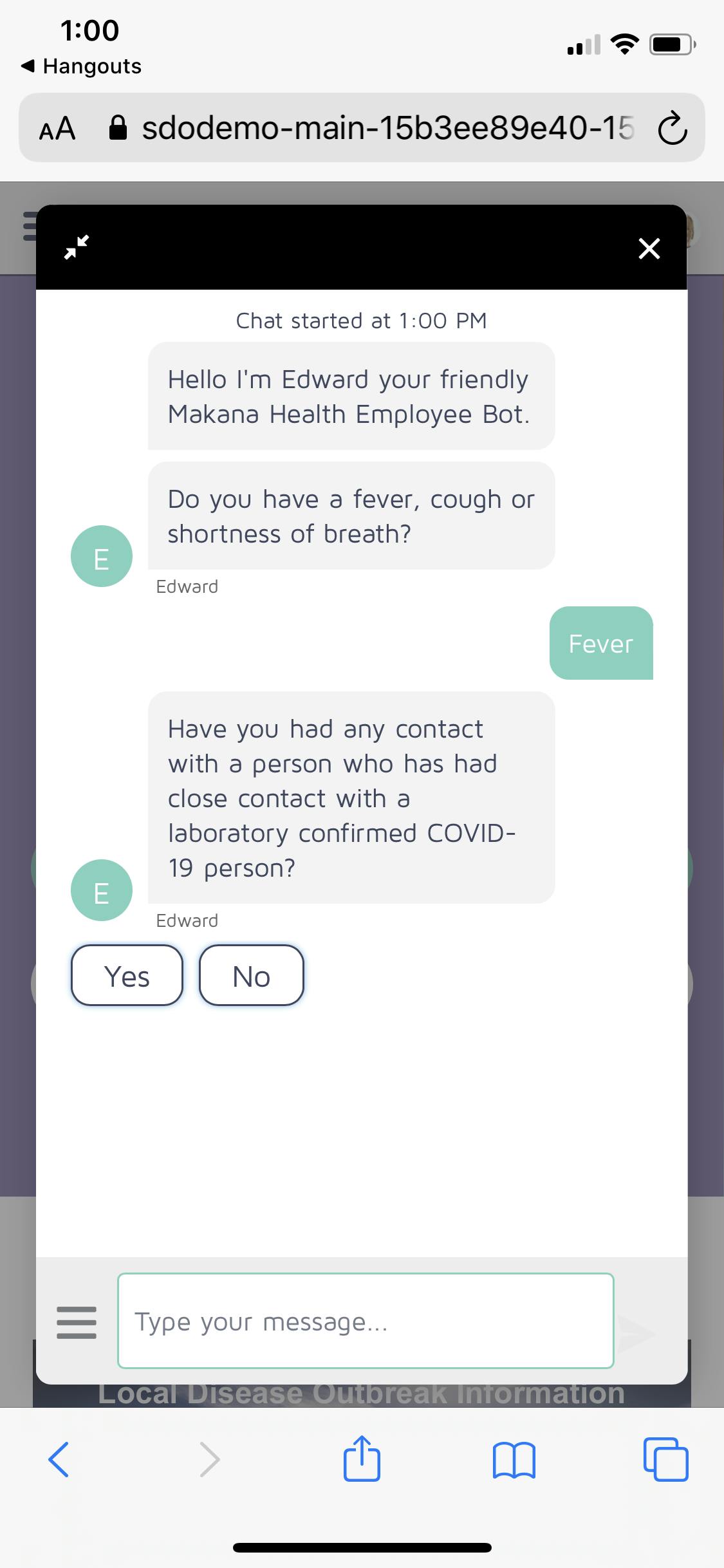
Community Portal
If citizens need help urgently, they can engage with the chat bot embedded in the portal. The bot can collect pre-screening information before transferring to a service agent to provide 1-1 help.


Call Centre
At the call triage centre, service agents can chat with patients, answering any questions they have and schedule telehealth appointments.
With a single care plan management platform your organisation will have the ability to:
- Conduct patient care on a Health Insurance Portability and Accountability Act (HIPPA) compliant environment
- Coordinate care and response across a variety of team members and locations
- Provide consistent, accurate, and clear steps of care for a variety of patient circumstances
- Templated care plans for fast deployment and easy, system-wide adjustment

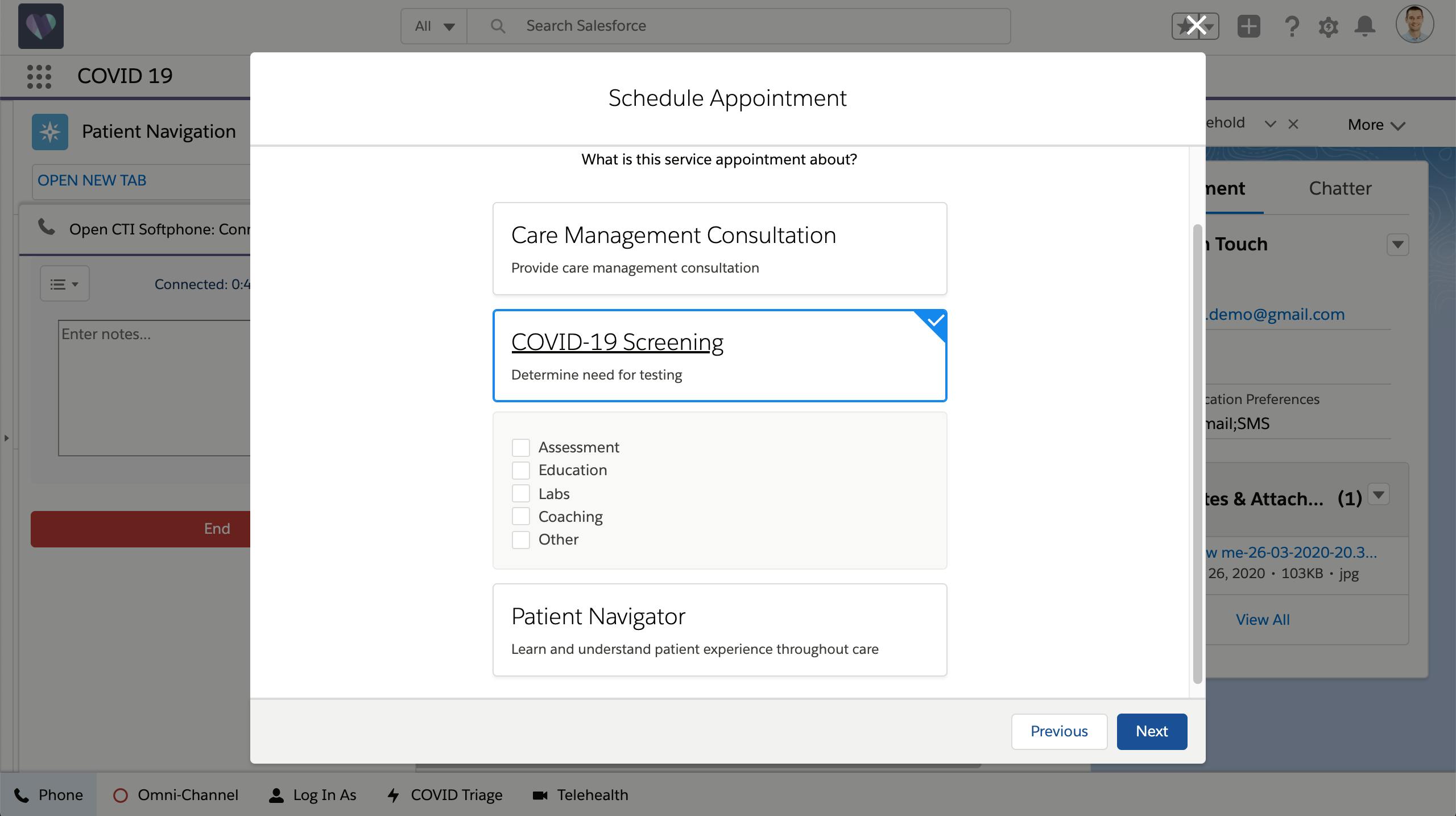
Scheduling Appointments
Agents can easily schedule in-person or virtual telehealth appointments for patients with clinicians. Care coordination and on-going care of patients can be done completely remotely - making it easier in times of emergency to provide care to all those who need it safely.

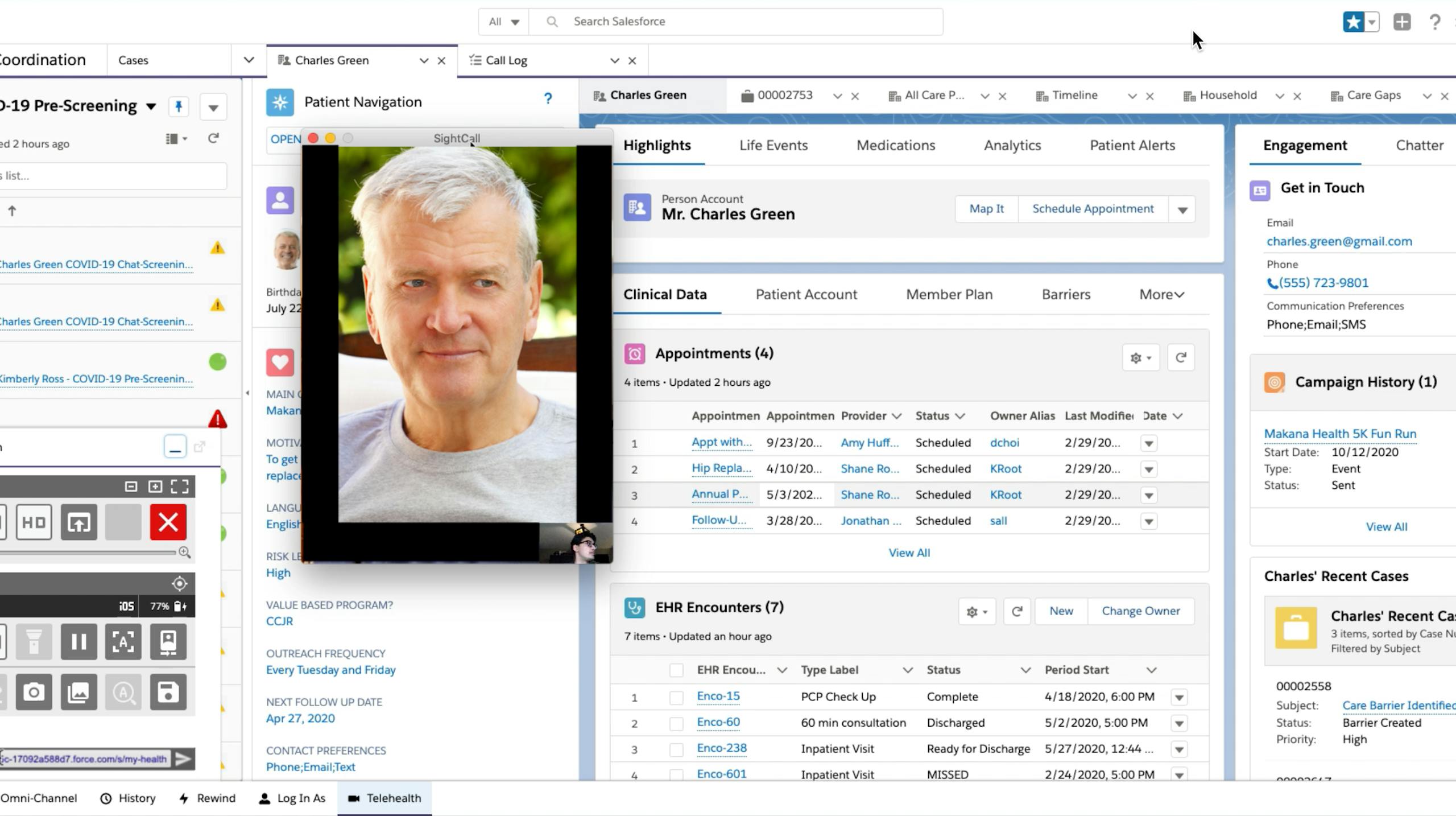
Telehealth
Telehealth appointments can be done right from the Service Console - connecting clinicians to patients while clinicians have a 360 degree view of the patient. This allows them to review the patients health, provide any test orders, and develop and provide patients with a care plan.

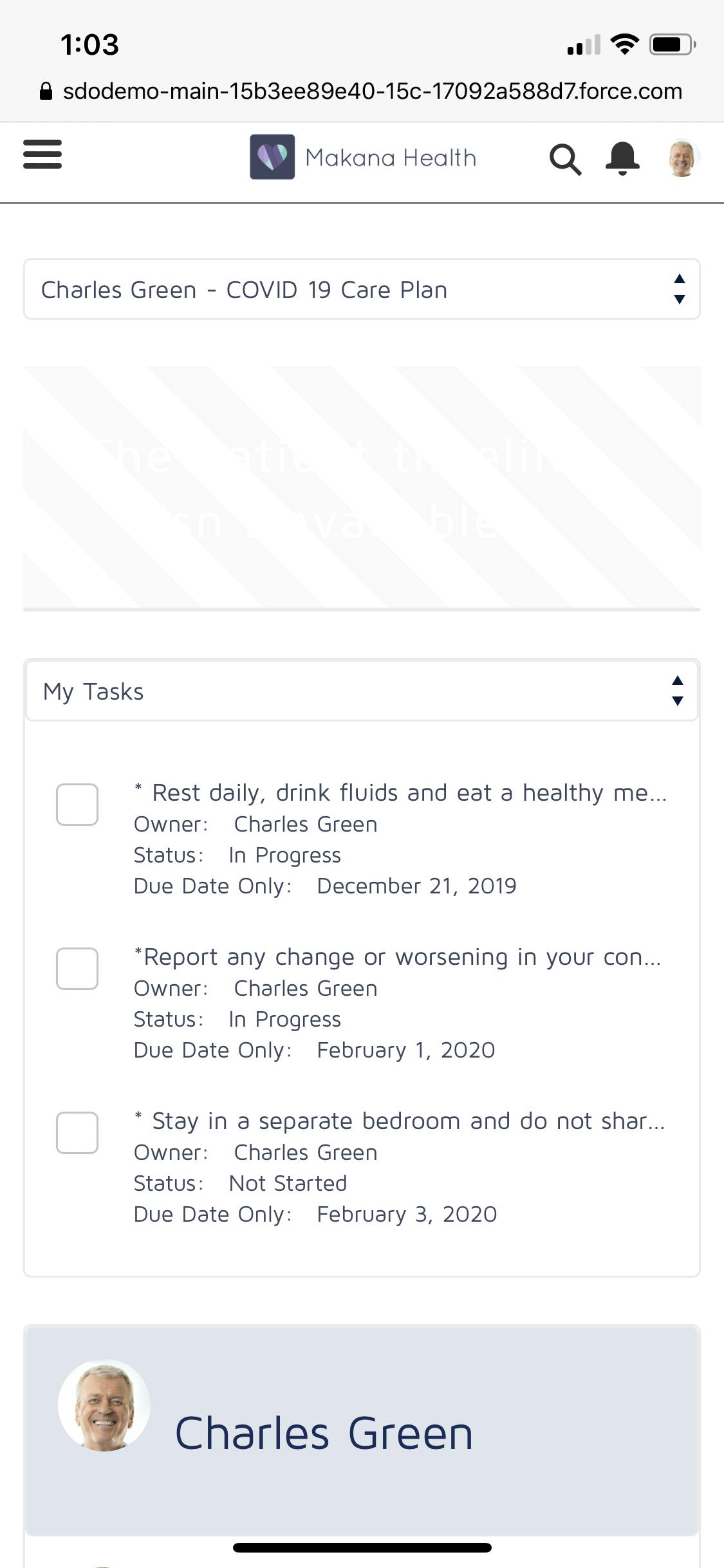
Care Plan
Patients can go back to the Community Portal to review care plans clinicians have created for them. Allowing them to always have access to the care and information they need.


Analytics
With this complete set of collected information, agencies can quickly analyse key performance areas of their readiness, share the analysis and act upon the analysed data.


Overview
In any serious emergency, governments will have a wide-range of individuals and sick or injured patients to monitor both at the site of the crisis and remotely. Care and oversight is often delivered by a broad coalition of medical professionals. To bring consistency and quality to initial and long-term response and care it is important for responding organisations to have a consistent care plan, health and wellness protocols, and tracking mechanism for all patient interactions.
Salesforce Health Cloud offers governments the ability to manage patient care and interaction including:
- Health Timeline
- Patient Profile
- Care Team Coordination
- New Patient Onboarding
- Intelligent Task Management
- Care Plan Customisation
- Advance Patient Segmentation
- Risk Stratification


Proactive Response Management
Proactively send citizens and patients information on how to get help in an emergency. Sending patients to a self-service community helps reduce calls and case loads requesting basic information. Citizens can login to Salesforce Community portal to see important links, blog posts, videos, knowledge articles and more. These sites are all mobile responsive so citizens can easily access via a mobile or tablet browser.


Community Portal
If citizens need help urgently, they can engage with the chat bot embedded in the portal. The bot can collect pre-screening information before transferring to a service agent to provide 1-1 help.


Call Centre
At the call triage centre, service agents can chat with patients, answering any questions they have and schedule telehealth appointments.
With a single care plan management platform your organisation will have the ability to:
- Conduct patient care on a Health Insurance Portability and Accountability Act (HIPPA) compliant environment
- Coordinate care and response across a variety of team members and locations
- Provide consistent, accurate, and clear steps of care for a variety of patient circumstances
- Templated care plans for fast deployment and easy, system-wide adjustment


Scheduling Appointments
Agents can easily schedule in-person or virtual telehealth appointments for patients with clinicians. Care coordination and on-going care of patients can be done completely remotely - making it easier in times of emergency to provide care to all those who need it safely.


Telehealth
Telehealth appointments can be done right from the Service Console - connecting clinicians to patients while clinicians have a 360 degree view of the patient. This allows them to review the patients health, provide any test orders, and develop and provide patients with a care plan.


Care Plan
Patients can go back to the Community Portal to review care plans clinicians have created for them. Allowing them to always have access to the care and information they need.


Analytics
With this complete set of collected information, agencies can quickly analyse key performance areas of their readiness, share the analysis and act upon the analysed data.






